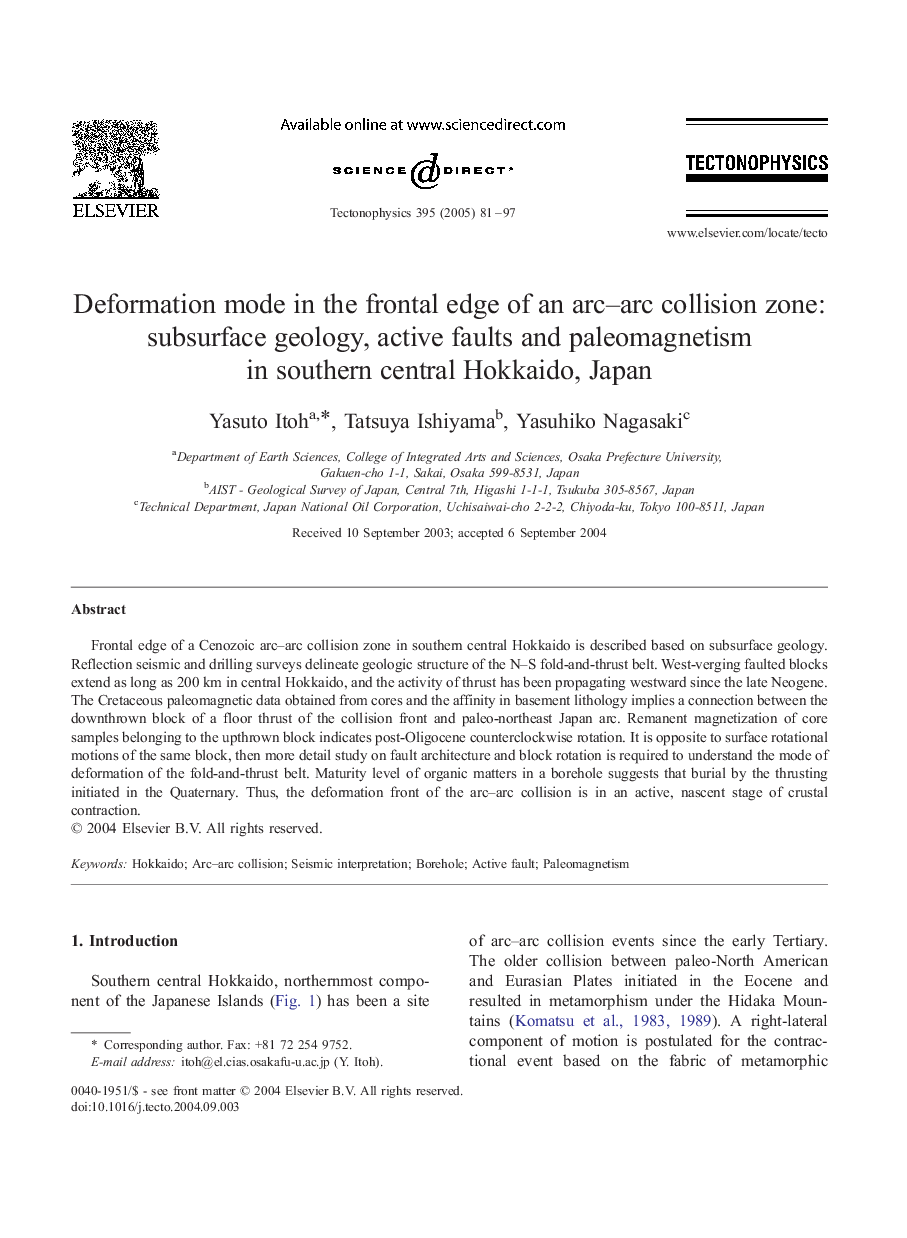| Article ID | Journal | Published Year | Pages | File Type |
|---|---|---|---|---|
| 9527177 | Tectonophysics | 2005 | 17 Pages |
Abstract
Frontal edge of a Cenozoic arc-arc collision zone in southern central Hokkaido is described based on subsurface geology. Reflection seismic and drilling surveys delineate geologic structure of the N-S fold-and-thrust belt. West-verging faulted blocks extend as long as 200 km in central Hokkaido, and the activity of thrust has been propagating westward since the late Neogene. The Cretaceous paleomagnetic data obtained from cores and the affinity in basement lithology implies a connection between the downthrown block of a floor thrust of the collision front and paleo-northeast Japan arc. Remanent magnetization of core samples belonging to the upthrown block indicates post-Oligocene counterclockwise rotation. It is opposite to surface rotational motions of the same block, then more detail study on fault architecture and block rotation is required to understand the mode of deformation of the fold-and-thrust belt. Maturity level of organic matters in a borehole suggests that burial by the thrusting initiated in the Quaternary. Thus, the deformation front of the arc-arc collision is in an active, nascent stage of crustal contraction.
Related Topics
Physical Sciences and Engineering
Earth and Planetary Sciences
Earth-Surface Processes
Authors
Yasuto Itoh, Tatsuya Ishiyama, Yasuhiko Nagasaki,
